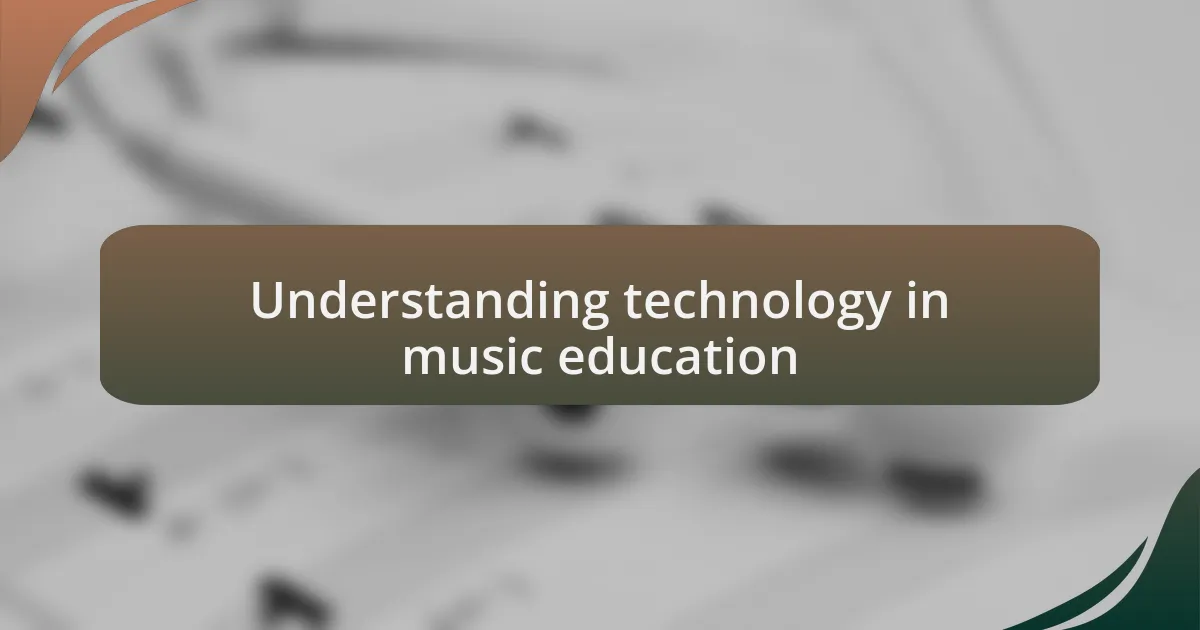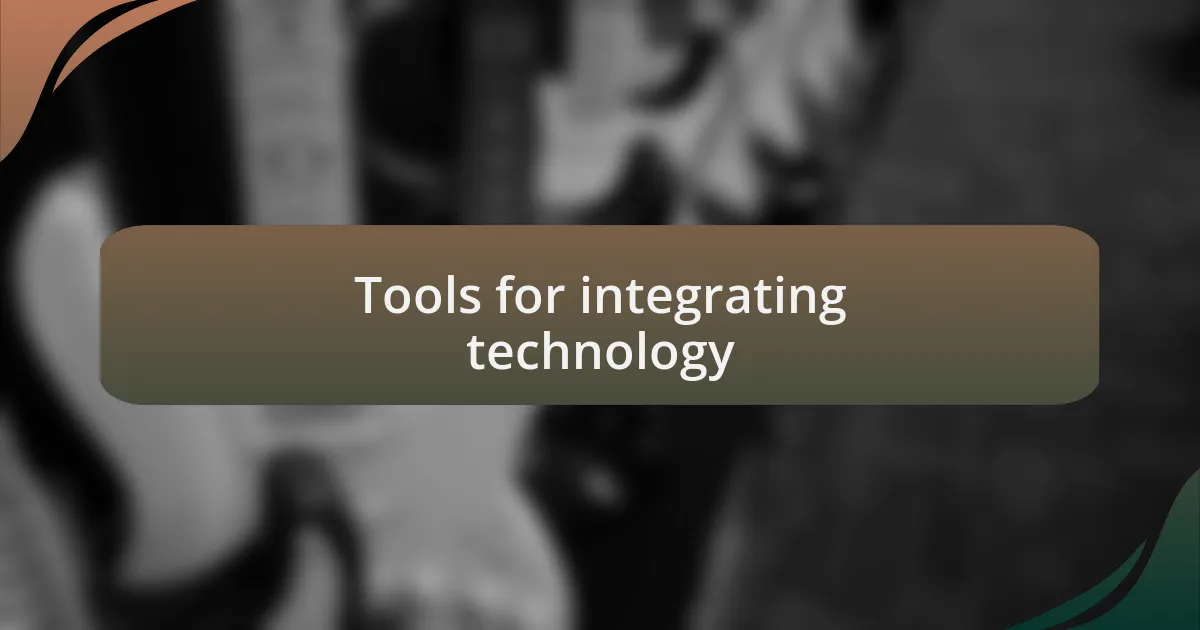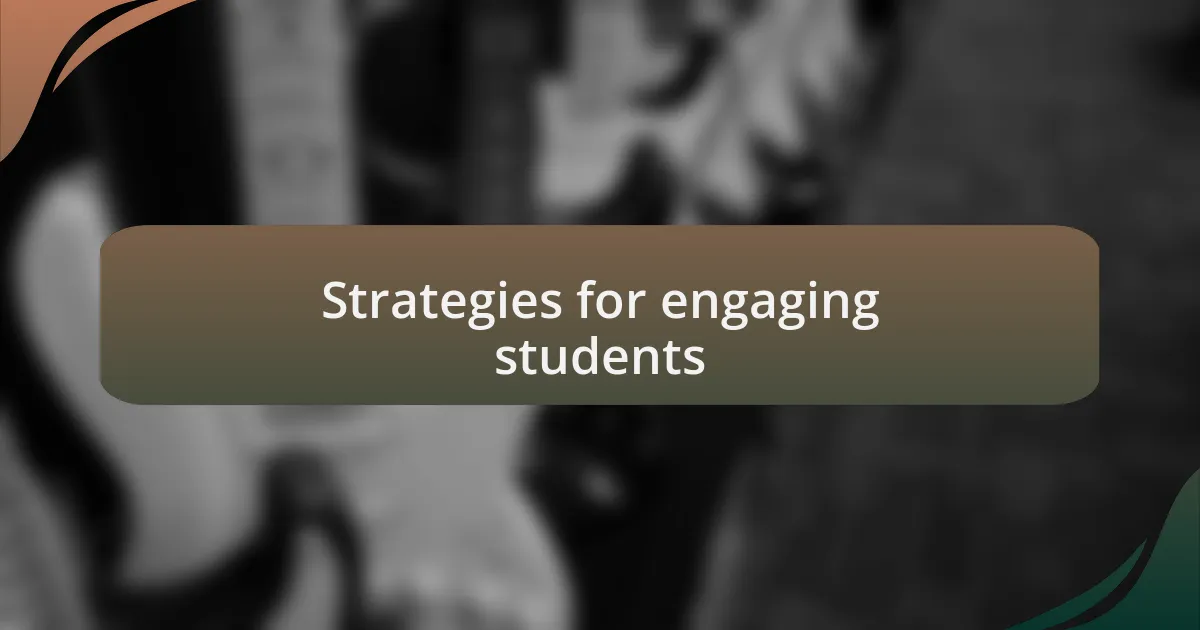Key takeaways:
- Technology, such as digital audio workstations and music apps, enhances creativity and engagement in music education.
- Online collaboration platforms and recording software promote teamwork and active reflection among students.
- Engaging students through gamified learning, video tutorials, and social media fosters enthusiasm and builds a supportive community.
- Access to diverse teaching styles through online resources helps create an inclusive learning environment for all students.

Understanding technology in music education
Technology in music education opens up a world of possibilities. For instance, when I first introduced digital audio workstations (DAWs) to my class, I saw students who previously struggled with traditional methods suddenly flourish. Isn’t it fascinating how a simple piece of software can amplify creativity and engagement?
Many may ask, how can streaming lessons and online tutorials truly enhance our understanding of music? In my experience, these resources provide access to diverse teaching styles and techniques that traditional classrooms may lack. This exposure not only broadens skill sets but also fosters an inclusive learning environment where every student can thrive.
Think about the last time you used an app to learn something new. I remember my excitement when I found a music theory app that made learning intervals feel like a game. Tools like these bring a playful aspect to education, allowing students to discover music at their own pace while building a solid foundation of knowledge. Can you imagine what tapping into technology could mean for student motivation in your classroom?

Tools for integrating technology
When I think about the tools that genuinely enhance music education, I can’t help but mention online collaboration platforms. They enable students to work together on music projects, regardless of their physical location. I recall a moment when my students used a shared document to compose a piece, discussing every note and rhythm in real-time. This experience not only strengthened their teamwork skills but also built a sense of community that’s often hard to foster in traditional settings, don’t you agree?
Another remarkable tool I often integrate is recording software. One time, my students recorded their performances and shared them through a classroom platform. Watching them analyze their own recordings—deciding what to improve or what to keep—was incredibly rewarding. It transformed their learning from passive listening to active reflection. Have you ever considered how empowering it is for students to hear their own progress?
Lastly, software for notation and composition warrants a mention. Using programs like Sibelius or MuseScore, I’ve seen my students bring their original compositions to life. The thrill of seeing their ideas visually represented on a staff not only boosts confidence but also nurtures their creative instincts. Isn’t it inspiring to witness young musicians take ownership of their creations with technology as their ally?

Strategies for engaging students
Engaging students in music education often means tapping into their interests and the technology they already love. I remember a time when I introduced my class to music apps that gamify learning, such as ear training games that turned the tedious task of interval recognition into a fun competition. Suddenly, every student was eager to improve their scores, creating an infectious enthusiasm in the room. Isn’t it fascinating how a little bit of play can open the door to deeper learning?
Another strategy I’ve found effective is using video tutorials and online masterclasses. One memorable instance involved inviting a local musician to conduct a virtual session. My students were mesmerized, taking notes and asking questions as if they were in the same room, which fostered an interactive experience that traditional lectures simply couldn’t match. Have you considered how firsthand insights from professionals can ignite your students’ passion for music?
Incorporating social media as a learning tool has also yielded remarkable engagement. I set up a class Instagram page where students could share their practice sessions, artwork related to music, or even a song they composed. This instant feedback loop not only encouraged creativity but also built a supportive community. It prompted me to wonder, how often do we take advantage of platforms that students are already interacting with daily?